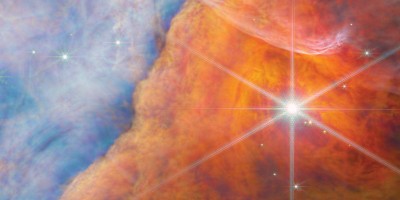
Data availability
SDO/AIA and SDO/HMI data are publicly available from NASA’s SDO website (https://sdo.gsfc.nasa.gov/data/). Details of the dataset we used are available at https://github.com/yiminking/pix2pix_EUV2HMI_datasets. Source data are provided with this paper.
Code availability
Codes for the AI models built in this paper are available at https://github.com/tykimos/SolarMagGAN. Codes used for the detection of active regions are available upon request from the corresponding author.
References
Kim, T. et al. Solar farside magnetograms from deep learning analysis of STEREO/EUVI data. Nat. Astron. 3, 397–400 (2019).
Camporeale, E. The challenge of machine learning in space weather: nowcasting and forecasting. Space Weather 17, 1166–1207 (2019).
Wang, H. N., Cui, Y. M., Li, R., Zhang, L. Y. & Han, H. Solar flare forecasting model supported with artificial neural network techniques. Adv. Space Res. 42, 1464–1468 (2008).
Bobra, M. G. & Couvidat, S. Solar flare prediction using SDO/HMI vector magnetic field data with a machine-learning algorithm. Astrophys. J. 798, 135–145 (2015).
Korsós, M. B., Ludmány, A., Erdélyi, R. & Baranyi, T. On flare predictability based on sunspot group evolution. Astrophys. J. Lett. 802, L21–L26 (2015).
Nishizuka, N. et al. Solar flare prediction model with three machine-learning algorithms using ultraviolet brightening and vector magnetograms. Astrophys. J. 835, 156–165 (2017).
Liu, C., Deng, N., Wang, J. T. L. & Wang, H. Predicting solar flares using SDO/HMI vector magnetic data products and the random forest algorithm. Astrophys. J. 843, 104–117 (2017).
Florios, K. et al. Forecasting solar flares using magnetogram-based predictors and machine learning. Sol. Phys. 293, 28–69 (2018).
Huang, X. et al. Deep learning based solar flare forecasting model. I. Results for line-of-sight magnetograms. Astrophys. J. 856, 7–17 (2018).
Liu, J., Ye, Y., Shen, C., Wang, Y. & Erdélyi, R. A new tool for CME arrival time prediction using machine learning algorithms: CAT-PUMA. Astrophys. J. 855, 109–118 (2018).
Wang, Y., Liu, J., Jiang, Y. & Erdélyi, R. CME arrival time prediction using convolutional neural network. Astrophys. J. 881, 15–24 (2019).
Lemen, J. R. et al. The Atmospheric Imaging Assembly (AIA) on the Solar Dynamics Observatory (SDO). Sol. Phys. 275, 17–40 (2012).
Scherrer, P. et al. The Helioseismic and Magnetic Imager (HMI) investigation for the Solar Dynamics Observatory (SDO). Sol. Phys. 275, 207–227 (2012).
Arge, C. N. et al. in Solar Wind 13 (eds Zank, G. P. et al.) 11–14 (American Institute of Physics, 2013).
Wang, Y. & Zhang, J. A statistical study of solar active regions that produce extremely fast coronal mass ejections. Astrophys. J. 680, 1516–1522 (2008).
Zhang, J., Wang, Y. & Liu, Y. Statistical properties of solar active regions obtained from an automatic detection system and the computational biases. Astrophys. J. Lett. 723, 1006–1018 (2010).
Acknowledgements
We acknowledge the use of the data from the SDO, which is the first mission for the NASA’s Living With a Star (LWS) programme. J.L. and R.E. thank the STFC (UK, grant number ST/M000826/1) and EU H2020 (SOLARNET grant number 158538) for funding. J.L. also acknowledges support from the STFC under grant number ST/P000304/1 and from the Leverhulme Trust via grant number RPG-2019-371. R.E. also acknowledges the support from the Chinese Academy of Sciences President’s International Fellowship Initiative (PIFI, grant number 2019VMA0052) and The Royal Society (grant number IE161153). Yimin Wang thanks the Solar Physics and Space Plasma Research Centre (SP2RC), School of Mathematics and Statistics (SoMaS) at the University of Sheffield for the warm hospitality and support received as an MSRC Visiting Research Fellow while carrying out this research. M.B.K. thanks the STFC for support under grant number ST/S000518/1. X.H. acknowledges the support from the National Natural Science Foundation of China (grant number 11873060).
Author information
Authors and Affiliations
Contributions
J.L. led and conducted the data preparation and data analysis and drafted the manuscript. Yimin Wang led and performed the machine learning approach with Y.J. and M.B.K. contributing to the discussions. R.E., X.H. and J.L. recognized the core problems. R.E. suggested and led the overall research. Yuming Wang helped with the automated detection of active regions. All authors contributed to discussions and participated in the interpretation of the results. All authors reviewed the manuscript.
Corresponding author
Ethics declarations
Competing interests
The authors declare no competing interests.
Additional information
Peer review information Nature Astronomy thanks Nick Arge and the other, anonymous, reviewer(s) for their contribution to the peer review of this work.
Publisher’s note Springer Nature remains neutral with regard to jurisdictional claims in published maps and institutional affiliations.
Supplementary information
Supplementary Information
Supplementary Discussion, Figs. 1–4 and References 1–13.
Source data
Source Data Fig. 1
Source data for Fig. 1. Variables can be restored using IDL; use keyword /verb to see description of variables when restoring.
Rights and permissions
About this article
Cite this article
Liu, J., Wang, Y., Huang, X. et al. Reliability of AI-generated magnetograms from only EUV images. Nat Astron 5, 108–110 (2021). https://doi.org/10.1038/s41550-021-01310-6
Received:
Accepted:
Published:
Issue Date:
DOI: https://doi.org/10.1038/s41550-021-01310-6
- Springer Nature Limited
This article is cited by
-
Machine learning in solar physics
Living Reviews in Solar Physics (2023)
-
Generating Photospheric Vector Magnetograms of Solar Active Regions for SOHO/MDI Using SDO/HMI and BBSO Data with Deep Learning
Solar Physics (2023)
-
Reply to: Reliability of AI-generated magnetograms from only EUV images
Nature Astronomy (2021)


